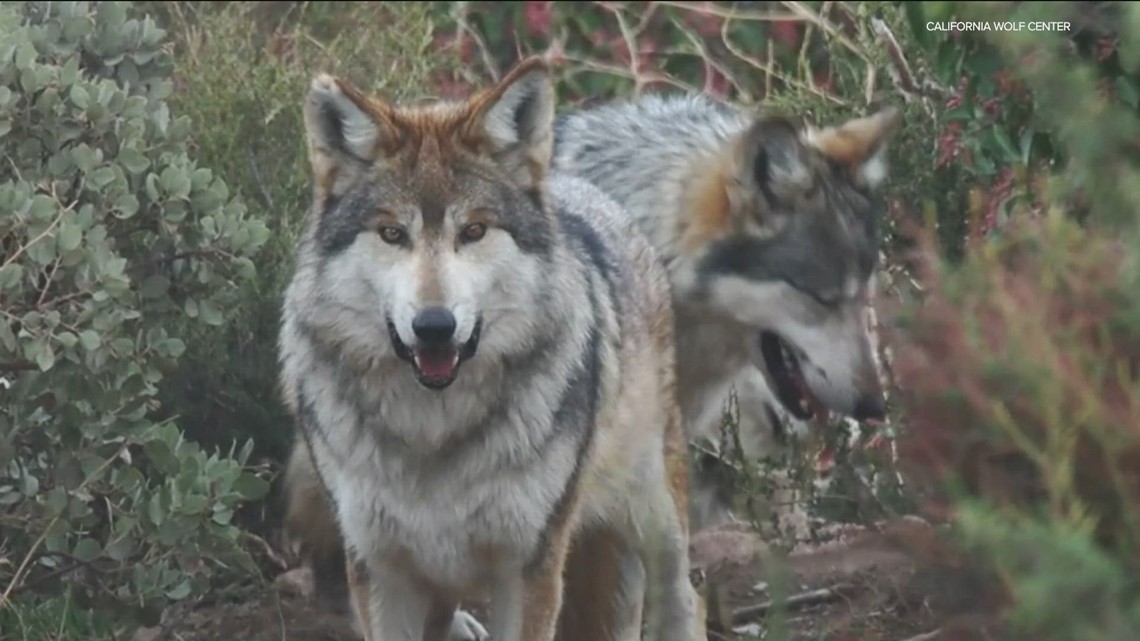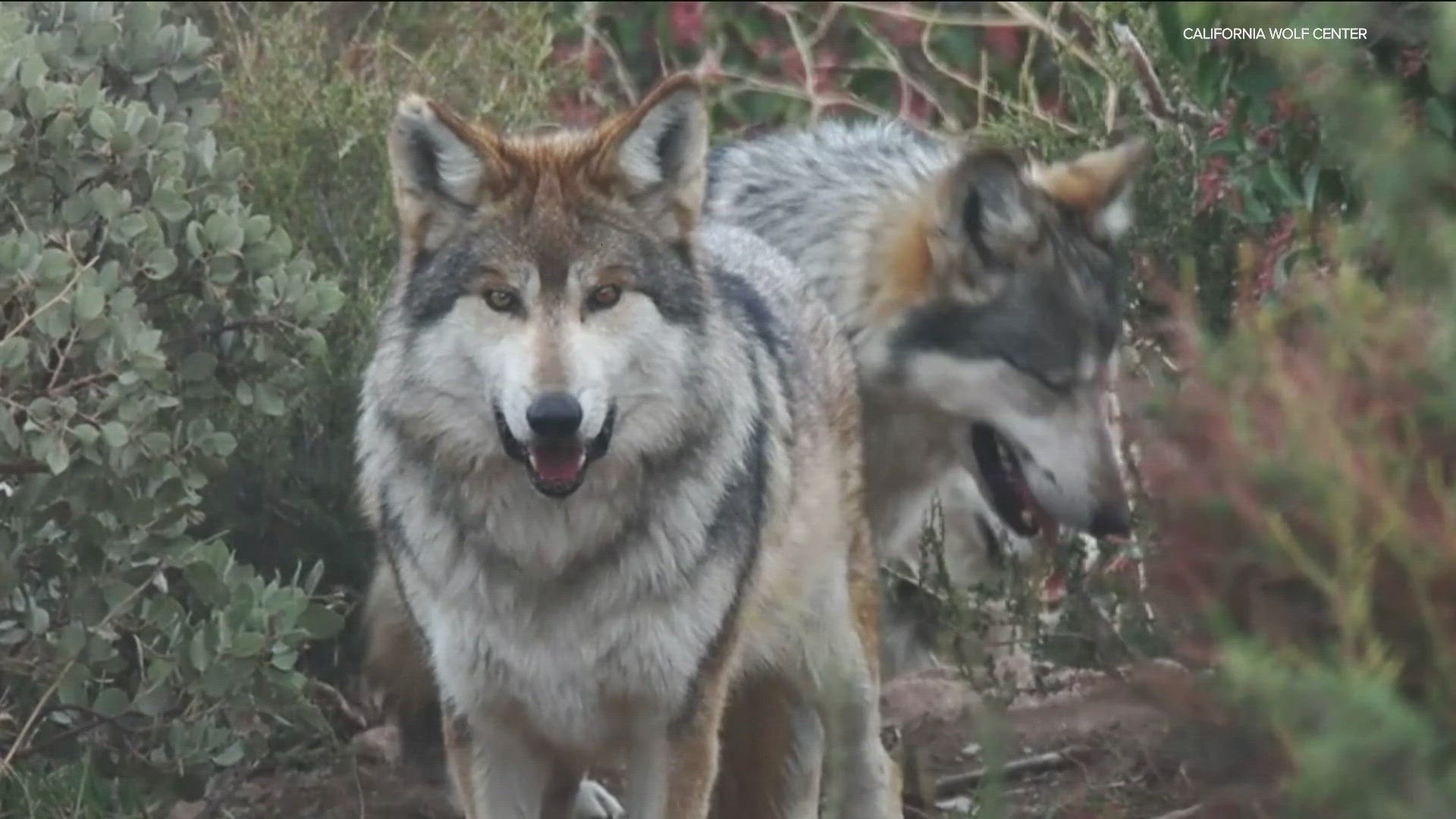SAN DIEGO — The Mexican Gray Wolf is one of the rarest land mammals on the planet and the California Wolf Center in Julian is one of the largest facilities in the United States trying to save them from extinction.
As of last week, 23 Mexican gray wolves roamed the California Wolf Center, spread out over 50 acres in Julian. But for young males in a pack, even these hills can get crowded.
“We had a pack of wolves with mom, dad and seven boys and there was starting to be some tension among the brothers,” said Ciera MacIsaac, Wolf Care and Reintroduction Coordinator. “In the wild, young males at this age become more independent and start the process of ‘dispersal’ where they leave their mothers to start their own pack.”


With tension in the pack of seven brothers, they needed to disperse. So last week, three of the brothers born at the Julian conservation center in 2019 and 2020 were loaded into high-impact crates and driven 2,000 miles to Chicago’s Brookfield Zoo.
It was a 31-hour drive, to Chicago, and they liked it.
“They are denning animals. They like to be in a den. They like to be in a dark enclosed space. Sometimes we will transport them to a new habitat and when we open the crate, they stay inside it because they like the crate," MacIsaac said.
The three brothers got to the new zoo on Saturday. Brookfield posted a video of them in their new habitat to Instagram.
“What these 3 boys get to do is be ambassadors for their species. They lived off exhibit here but now they get to be part of a habitat where guests can see them and start learning about Mexican gray wolves and start learning about why they're so important," MacIsaac said.
When you see a Mexican gray wolf, you’re seeing something extraordinary. Miraculous really. They were all but extinct by the 1970’s because of unjustifiable anti-predator campaigns.
The Mexican gray wolf used to live all over the Southwest, from Texas to Arizona and in Mexico. As European settlers moved they killed wolves.
“By the 1970's Mexican wolf numbers were extinct in the United States. The last 13 were found in Mexico,” according to MacIsaac.
They were put under the Endangered Species Act. Only seven of the last 13 were unrelated enough to start a breeding program and try to bring them back from the brink of extinction.
“There was a good amount of time where they didn't know if it would work, if we were going to be able to bring back the Mexican gray wolves. If they could bring up the number of Mexican gray wolves," MacIsaac said.
Because of the hard work of conservation groups like the California Wolf Center in Julian- through caretaking, captive breeding and cross-fostering, today there are 257 Mexican gray wolves.
“When wolves are in the ecosystem, there's a balance. If they are removed from an ecosystem, the ecosystem is going to fall out of balance," MacIsaac said.
Brookfield Zoo has two habitats for Mexican gray wolves. The three males from CWC will reside in their own habitat, separate from another pack, which were selected to breed this year in the hope they may be able to cross-breed pups into the wild.
Now there’s a new mission in Chicago, and more peace and space for the pack to continue their comeback in Julian.
“It is so good to make a connection, to see them in person, and realize this is an animal that should be on the landscape. This is an animal that should be in the ecosystem. And it’s an animal that I can help out with," MacIsaac said.
You can help make sure these wolves don’t disappear from the planet by supporting places like the California Wolf Center.
WATCH RELATED: Coyote has pups under family’s deck in Pacific Beach

